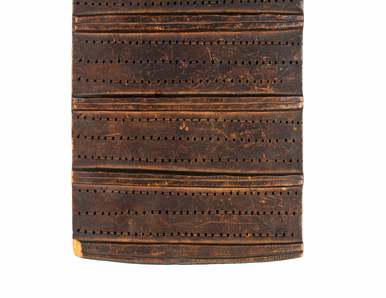The cult of the bear was characteristic of all the indigenous peoples of the Amur region. It was considered the master of taiga and mountains. When killing a bear, the peoples of the Amur region organized the so-called “bear festival”. It was based on the idea that the soul of the killed animal can be revived in a new body.
The Nivkhi, Ulchi and Orochi raised a bear cub for this purpose in a special log cabin made of overlapping logs. The bear cub grew for three years inside the cabin and was fed with specially prepared food. Women were forbidden to approach the bear.
On a certain day, guests — fellow countrymen, neighbors, relatives — came to visit. They held dog races, games and competitions for the first few days. On the second or third day they took the bear out of the log cabin and walked it through the camp, streets, bringing it to every house so that the bear’s spirit would remember that it lived with people who did not violate the prohibitions and would favor them in the future.
Then the best hunter had to kill the bear with a single shot from a bow. In doing so, he would launch the first arrow towards the forest, thus “clearing” the way for the spirit of the beast. There was a strict subordination in the use of bear meat: women were allowed to eat only the lower part of the carcass, the non-tabooed meat. Men could eat both the lower and upper parts of the carcass, but only elderly men were allowed to eat certain parts — meat from the head, tongue, heart.
Special utensils were used for the feast, including the nhyr ritual dippers, in which the heart was served to the eldest of the family. The pattern on the utensil could reveal some of the details of the ritual. For example, if a bear was killed at a bear feast, the heart bowl featured a bear with a chain around its neck, and if the animal was hunted in the forest, its image had no chain.
There were also special
bowls for other organs of the animal — lungs, liver, spleen and kidneys. All
utensils, as well as bear’s bones and skull were traditionally stored at the
ritual site where the bear killing ritual took place, or in a special barn.






